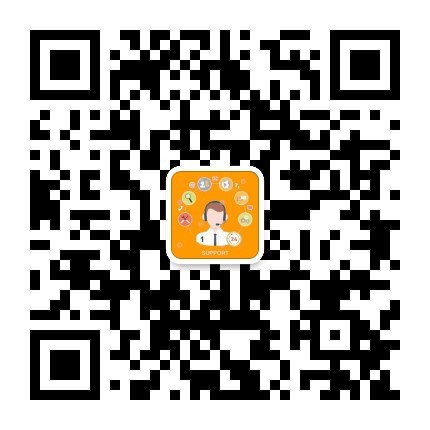Book7 12 How Many Are There的教案范文
Book7 12 How Many Are There的教案范文

(一)教學目標:
知識目標:
1、掌握可數(shù)名詞復(fù)數(shù)的3種情況。
2、掌握句子單附屬的用法,This is a/an +名詞的單數(shù)形式
These are +名詞的復(fù)數(shù)形式
能力目標:
1、可以根據(jù)教師的提問做出相應(yīng)的回答。
2、可以復(fù)述錄音機所說的句子。
3、能根據(jù)圖片信息說出簡單的句子。
情感態(tài)度與價值觀:
激發(fā)孩子們學習英語的興趣和好奇心,提高他們的語言表達能力。
(二)重難點:
1、以”s” “sh” “ch” “x”為結(jié)尾的可數(shù)名詞變復(fù)數(shù)時,在詞尾后加-es
2、不規(guī)則變化,如:下列詞 foot, man, woman, child 等等。
(三)教具準備:
錄音機、教學磁帶、課件
(四)學情分析:
學生已經(jīng)掌握了很多的可數(shù)名詞的復(fù)數(shù)形式,因而使本節(jié)課的教學就減少了不少負擔,治學教師整理得有條有理,學習的內(nèi)容對學生來說就簡單容易多了。
(五)教學設(shè)計:
一、歌曲導入,激發(fā)興趣
T: Today there are many teachers study with us. Are you happy
S: Yes, we are happy.
T : How to express your happiness ,×××
S1: Sing a song.
T: Good idea! Let’s sing a song of “This is the way”. Ok
S: Ok.
(設(shè)計意圖:通過師生一起歌曲演唱,給學生創(chuàng)造了輕松愉快的課堂氣氛,有助于師生情感的交流,使學生很自然的駛?cè)肓擞⒄Z課堂。)
二、新授
T: Are you ready for English class
S: Yes, we are ready.
T: Well, Today we will learn Lesson 12 How Many Are There Now read together.
S: Lesson 12 How Many Are There
T: I have many pictures in the TV. Do you want to see
S: Yes.
1. Pencils and stamps.
T : (課件圖片) What is this
S1: This is a pencil .(板書pencil)
T: How many are there How many
S2: One pencil.
T: Yes, this is one pencil. (課件句子)
T : (課件圖片) What are these
S3: These are pencils .(板書pencils)
T: Good. We can use‘many’in this sentence .Who can
S4: These are many pencils.
T: How many are there
S5: Eleven pencils.
以同種方式教授This is a stamp . These are many stamps .(板書stamp,stamps)
(設(shè)計意圖: 呈現(xiàn)圖片可以給他們以刺激,問答的形式可以使其保持注意力,并鍛煉其語言的準確性。)
T: Now, look at the blackboard. (手指pencils, stamps并將s描紅) Do you see the s at the end of these words
S: Yes.
T: These words get bigger with an s. (板書) This word ’s Chinese meaning is ……(手指bigger)
S5:比較大。
T : Yes ,very good .這些單詞在加了字母s后數(shù)目就變大了。Please read this sentence together.
S:These words get bigger with an s .
2.Dresses ,dishes and buses
T: I have another six pictures. Do you want to see
S: Yes.
T: Ok. But I have a request (要求).According(根據(jù)) to the pictures ,repeat the sentences that the tap says .Are you ready to listen to the tap
S: Yes, we are ready.
課件每出示一張圖片,放一段錄音,隨即然學生單獨重復(fù),即時板書dress, dresses, dish, dishes, bus, buses
(設(shè)計意圖:學生聽錄音,模仿標準的語音語調(diào),培養(yǎng)了聽的習慣,同時為他們最終的說打下良好的基礎(chǔ)。)
T:(手指單詞dresses ,dishes, buses) These words get bigger with an …(邊說邊板書)
S: es
T: (板書es) All of you are very good . Read after me ‘These words get bigger with an es .’
S: These words get bigger with an es.
3. Men, women and children
T: At last, I only have six pictures .They are about people. (出示課件一男人圖片) According this picture ,who can say a sentence .
S1: This is a man.
S2: He is a man. (板書man)
T: He is a handsome man. Do you think so
S: Yes.
(出示課件幾個男人圖片)
S3: They are men.
S4: They are five men. (板書men)
以同種方式教授 woman, women, child ,children 并板書
(設(shè)計意圖:給學生充分的自由,讓他們根據(jù)圖片信息,發(fā)揮想象,自由地說出句子,只要無大的語病即可。鼓勵、相信他們的能力,這不但能鍛煉他們的口語表達能力,并可增強他們的信心。)
T: (手指單詞men ,women, children) Do they get bigger with an s or an es (板書)
S: No. (板書)
T: This words don’t have an s or es .They are special words.(板書special words)
三、拓展運用
T:今天我們學習了名詞的單復(fù)數(shù),名詞的復(fù)數(shù)有三種情況,第一種情況是
S: 在單詞的后面加s。
T: 第二種情況是
S: 在單詞的后面加es。
T: 最后是不規(guī)則的變化,如men,women,children。我們已經(jīng)學習了好多的可數(shù)名詞,誰能說出一些,并說如何變成復(fù)數(shù)形式?
S: book---books toothbrush---toothbrushes chair---chairs room---rooms ……
從學生說出的眾多單詞中,總結(jié)名詞變復(fù)數(shù)加es的規(guī)律:以”s” “sh” “ch” “x”為結(jié)尾的可數(shù)名詞變復(fù)數(shù)時,在詞尾后加-es 。不規(guī)則變化的單詞:tooth,foot ,man,woman,children
(設(shè)計意圖:在教師的引導下,讓學生自己發(fā)現(xiàn)并總結(jié)規(guī)律,鍛煉學生的自主學習意識,并體驗成功的喜悅)
【Book7 12 How Many Are There的教案】相關(guān)文章:
(NSEC) Book7 Unit4 Sharing教學設(shè)計03-03
《好吃的糖果》活動教案(精選12篇)04-30
《練習一》精品教案(精選12篇)11-11
聲母《jqx》教案及點評(精選12篇)10-15
《月跡》教案(通用12篇)12-06
兒歌《逗螞蟻》教案(精選12篇)05-16
關(guān)于斜面的教案(通用12篇)11-06
我鍛煉我健康的教案(精選12篇)05-29
兩小兒辯日教案(精選12篇)03-20







